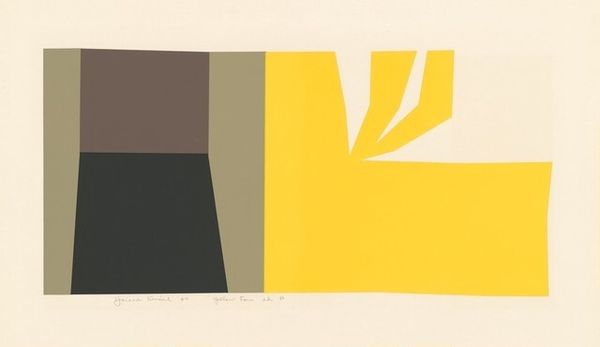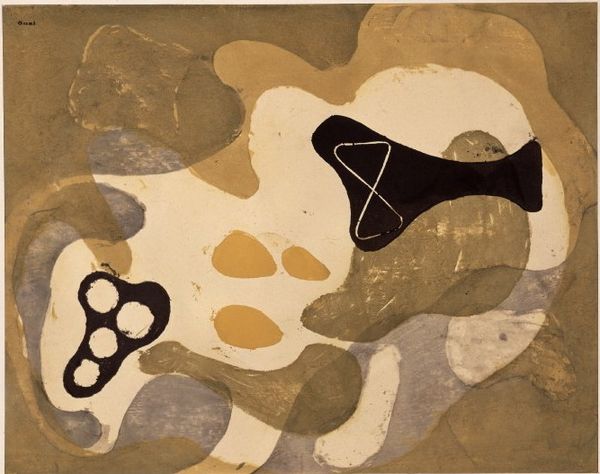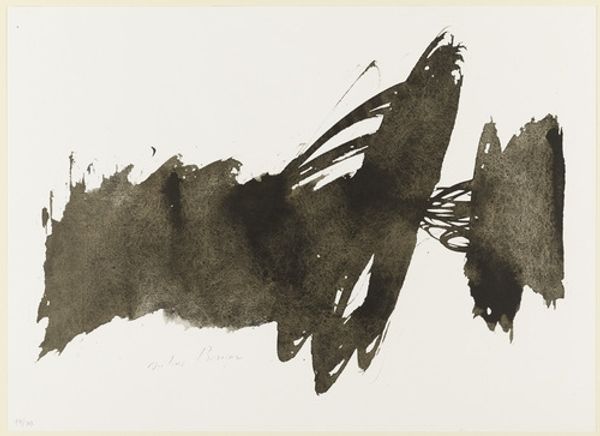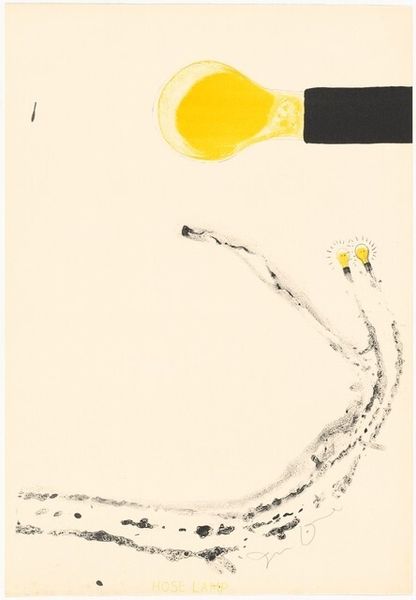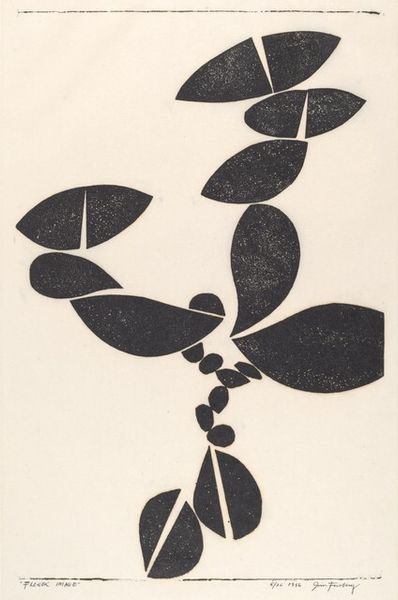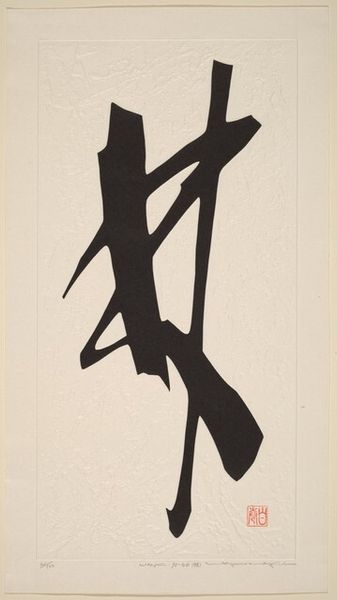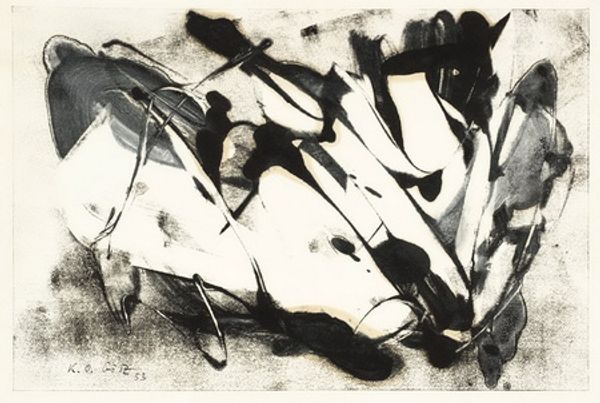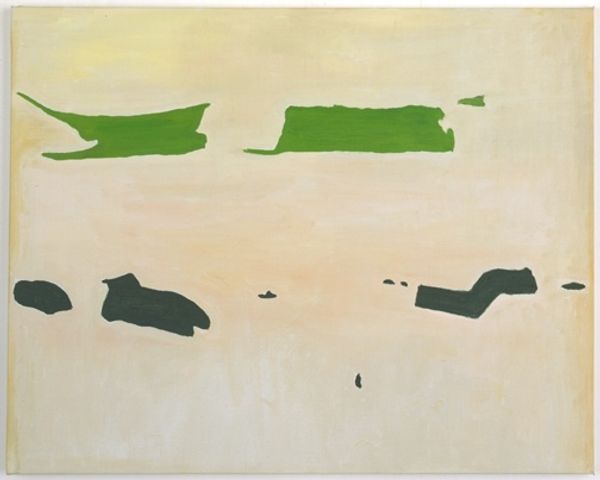
mixed-media, print, stencil
#
stencil art
#
mixed-media
# print
#
pop art
#
stencil
#
geometric
#
abstraction
Copyright: National Gallery of Art: CC0 1.0
Editor: Here we have Maki Haku's "Rest" from 1973, a mixed-media stencil print. I’m struck by the simplicity, the stark contrast between the black shapes and the white space. There's almost a sense of Japanese calligraphy to it. What do you see in this piece? Curator: I see a powerful commentary on the performative demands of modern life, particularly for women. Consider the title: "Rest." What does rest *mean* in a patriarchal society that constantly pushes for productivity and self-optimization, especially for those who are marginalized? Editor: I hadn’t considered that! So the black shapes aren’t just abstract forms, but perhaps represent…obstacles? Or pressures? Curator: Precisely! They could be interpreted as the weight of societal expectations, the fragmented self struggling to find stillness. And that small, defiant circle of yellow - a point of resistance, a glimmer of hope perhaps? It makes me think about intersectional feminism and how we reclaim space for self-care and genuine rest, which become acts of rebellion against oppressive systems. Where do you see hope for resisting this? Editor: Well, there's something comforting in the asymmetry and imperfection. Maybe those jagged shapes acknowledge that resistance doesn't have to be polished. It just *is*. The whole form pushes against perfection and constraint! Curator: I completely agree. It resists the visual trope that we need perfectly ordered self-care in order to benefit, in a capitalist culture. By simply resting. Editor: Thinking about it this way has completely transformed my understanding of the work! I went from thinking this work has simplistic beauty, and I'm walking away appreciating art's activist potential to provoke thought about our culture! Curator: Indeed. It shows us how deeply art can resonate when viewed through a lens that acknowledges power structures and lived experiences.
Comments
No comments
Be the first to comment and join the conversation on the ultimate creative platform.



